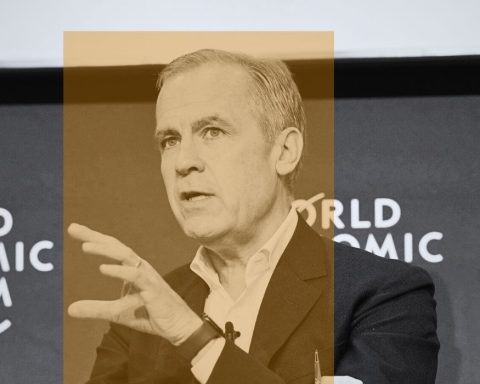As international megabanks like Wells Fargo and HSBC renege on their global-warming commitments, three Canadian shareholder groups are scrutinizing Canada’s banks and demanding a wide range of reforms. Through shareholder resolutions and an open letter, these investors are calling on banks to hang tight to their emission targets and plans, increase their energy transparency, improve board governance and discontinue anti-climate lobbying.
The three groups are the Shareholder Association for Research and Education (SHARE), Investors for Paris Compliance (I4PC) and the Trottier Family Foundation. They are part of an increasingly vocal portion of shareholders who believe that the Trump administration in the United States is worsening an already calamitous state of global warming, a situation that will – sooner or later – dictate a massive transition in how energy systems around the world are financed.
Canadian banks are poised to play a big role in this transition. With their deep ties to the oil and gas industry, the country’s banks are among the world’s largest fossil fuel funders through loans, investments and financial dealmaking. In a report last year, Royal Bank of Canada (RBC) was ranked the seventh-largest bank on fossil fuel financing between 2016 and 2023, while Scotiabank ranked 11th.
“Banks have tremendous power to either maintain the status quo or actively and intentionally steward our country towards the new economy,” says Éric St-Pierre, executive director of the Trottier Family Foundation. “The power is in their hands, and they could really embrace funding the new economy that is moving toward renewables and the cleantech sector.”
“Internationally, we see an energy transition that is happening regardless of politics,” says Amanda Carr, associate director of SHARE. “It’s an economic transition that is in play and very exciting. We want to understand how the banks that we invest in are seizing those opportunities.”
As banks backslide, shareholders band together
The campaigns come only weeks after two major global banks – Wells Fargo and HSBC – rolled back their net-zero emission targets. In February, Wells Fargo became the first major bank to abandon its goal to bring financed emissions to net-zero by 2050. HSBC, which had previously committed to a very ambitious goal of reaching net-zero in all its business by 2030, announced it would push back its net-zero target to 2050.
The rollbacks follow a move over the last few months by all major U.S. and Canadian banks to leave the Net-Zero Banking Alliance, the global net-zero banking coalition.
The banking sector should be identifying those new opportunities that bring us toward the transition to a cleaner economy. The Canadian banks could really set the bar here.
– Éric St-Pierre, Executive Director, Trottier Family Foundation
In February, the Trottier Family Foundation published an open letter to the banks signed by 34 pension funds, endowments, family offices and foundations representing more than $53 billion in assets. The signatories call on the banks to uphold their 2050 net-zero commitments, adopt short-term science-based targets and ensure transparent annual reporting on climate targets.
“We’re quite concerned that a lot of the Canadian banks have left the Net-Zero Banking Alliance,” St-Pierre says in an interview. He hopes the letter “sends a signal that the 34 of us are bank clients and we have significant assets, so we would ask to be taken seriously by the banks.”
In response to a request for comment on the letter, a spokesperson for the Canadian Bankers Association (CBA) issued a statement that the sector “understands the important role it can play in facilitating an orderly transition to a lower-carbon economy, supporting collaborative approaches between the public and private sectors.” Notably, the issue of climate commitments or 2030 targets is absent from the CBA statement. “Canadian banks remain committed to strategically supporting clients in their transition efforts. They will continue to implement and report on their own climate strategies and plans, integrating internal capabilities to adhere to relevant international standards.”
A crucial metric for bank accountability
In a separate campaign, SHARE, PFA Pension – the largest pension fund in Denmark – and other investors have filed shareholder proposals with four of Canada’s biggest banks: Scotiabank, Bank of Montreal, CIBC and Toronto-Dominion, urging them to adopt a key metric recognized as a crucial indicator of net-zero progress in the financial industry.
Called the energy finance (or energy supply) ratio, the metric compares the volume of low-carbon and fossil fuel financing. Developed by the new energy finance division at Bloomberg (BloombergNEF), the ratio illustrates an institution’s level of low-carbon energy financing compared with its fossil fuel financing. Bloomberg has established that the ratio can include some financing of oil and gas but needs to be at least 4:1 low-carbon to fossil fuel worldwide by 2030 to limit global warming to 1.5°C.
“What’s interesting to note is that the [target] ratio is four to one, not four to zero,” SHARE’s Carr says. “We’re not seeing something that is extreme from the BloombergNEF team.”
In a recent report, Bloomberg estimates that the energy finance ratio in the global banking sector stood at 0.89:1 in 2023, less than a quarter of what it needs to be to maintain 1.5°C of global warming.
Shareholder advocates gain ground
Shareholder pressure has generated some success. RBC is one of three banks (the others are Citi and JP Morgan) that are expected to start reporting their energy financing ratios in 2025 as a result of investor proposals last year. As well, this year’s proposal from SHARE has prompted Scotiabank to start reporting the ratio in 2026.
Carr says that the ratio helps investors understand how well individual banks are performing on energy finance and provides a good management tool on the climate transition. “What the ratio allows us to do is to compare banks, regardless of size, and it also allows a bank to determine its own destiny.”
RELATED
Most Canadian pension funds recognize the urgency of climate change. Some really don’t.
Canadian investors stand firm on ESG despite ‘greenhushing’ trend, report finds
Finance leader warns that Canada is losing the race for a sustainable economy
Shareholder advocacy group I4PC is using investor resolutions to push TD Bank to embed net-zero governance at the bank’s board of directors and Bank of Montreal (BMO) to disclose its support for industry associations lobbying against pro-climate policy.
As a result of I4PC pressure, TD has agreed to review board governance policies and director selection criteria to ensure that the board is accountable and competent on key risks and priorities, including net-zero issues. I4PC has also filed a resolution with BMO calling on the bank to disclose its support for associations such as the Canadian Association of Petroleum Producers, which is lobbying against policies such as a cap on carbon emissions.
A shift toward renewables at National Bank
The banking sector has pushed back in recent years on the idea that it can lead the energy and climate transition, arguing that it also needs to continue financing fossil fuel energy. Julian Wentzel, chief sustainability officer at HSBC, recently said it’s time to end the “negative bias” toward fossil fuels.
But St-Pierre points to National Bank as an example of a relatively small institution that is showing leadership on at least one important climate measure, the commitment to renewable energy financing. In its most recent climate report, National Bank says it has tripled its renewable-energy lending to $15 billion from $5 billion in 2019 and is aiming to bring this to $20 billion by 2030.
National’s renewable-energy commitment is larger than that of RBC ($15 billion by 2030), a bank that is more than four times bigger (although RBC is expected to publish its annual climate report shortly that may update this commitment).
St-Pierre says there could be a push by banks to expand fossil fuel financing as a result of Donald Trump’s tariffs, which have raised interest in a new national energy pipeline. But that would ignore other energy opportunities such as expansion of the national electricity grids and government clean energy procurement, he says. “The banking sector should be identifying those new opportunities that bring us toward the transition to a cleaner economy. The Canadian banks could really set the bar here.”
Eugene Ellmen writes on sustainable business and finance. He is a former executive director of the Canadian Social Investment Organization (now the Responsible Investment Association).







